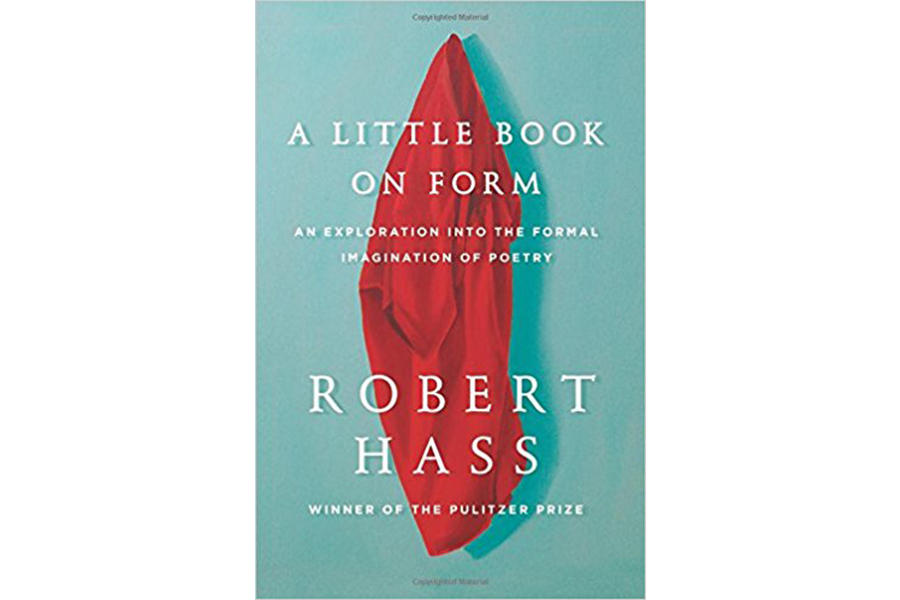'A Little Book on Form' asks: What's the right shape for a poem?
Loading...
Many people who dislike contemporary poetry say they prefer work with rhyme and meter, while those who prefer free verse often abhor the constraints of fixed forms. A Little Book on Form, by Robert Hass, Pulitzer Prize winner and former poet laureate of the United States, offers insight for both groups.
The book evolved from notes and reading lists Hass compiled for a seminar on form he taught at the Iowa Writers’ Workshop in 1995. The texts available at that time focused mainly on rules for composition, rather than the openness of various forms or the principles and impulses that undergird most of the poems in English or American literature that are not written in fixed forms. His book, in contrast, is “about the formal imagination in poetry.”
To elucidate that “formal imagination,” he asks in his introduction “What is form?” and considers common definitions, including “external shape” and “the arrangement and relationship of basic elements in a work of art, through which it produces a coherent whole.” He also offers one of his own: “The way the poem embodies the energy of the gesture of its making,” much like a canvas indicates both the materials and choices a painter chose.
Hass then turns his attention to the line, the basic building block in poetry, and devotes the first four chapters, respectively, to the single line, couplets, triplets, and quatrains. He shows how each functions and has been used by famous poets in various eras and traditions.
At the beginning of the chapter called “Two,” for example, he explains that “One line is a form in the sense that any gesture is a form. Two lines introduce the idea of form as the energy of relations.” He then introduces famous couplets from the Roman poet Catullus, the medieval monk Aldred, and Henry David Thoreau, among others.
As Hass analyzes these structures, he reminds readers that almost all free verse and metered poems are constructed from a combination of one-, two-, three-, and four-line stanzas. He also illustrates the tremendous potential of these seemingly simple tools, as with the quatrain, which expresses the completeness and expressiveness of the number four, as in the four points of the compass or the sides of a square.
After this preparation, Hass presents detailed discussions of blank verse; the sonnet; sestina and villanelle; the ode; elegy; satire; organic form; difficult forms; collage, abstraction, and procedural poetics; and the prose poem, as well as how free verse works. That may sound snooze-inducing, but Hass makes the journey engaging and lively because he is as talented a teacher as he is a poet.
When Hass contemplates the sonnet, for example, the most durable and widely used form in English poetry in the past 500 years, he explains its history and explores why it resonates so strongly with readers. One reason is that the form originated as “a kind of staring into the eyes of the beloved” and it “has the same proportions as the human face,” as poet and scholar Peter Sacks has written. Thus reading a sonnet can be thought of as an intense gaze at a subject, and the best of them, as Hass notes, “bring intensity or playfulness of imagination to the way energy moves in the form.”
In another chapter, Hass describes the ode as a praise poem that likely emerged from prayer and litany and is either “about trying to get into right relation to an imagined good or power,” or “about not being in possession of some desired good or power.” These lines from Emily Dickinson’s poem “I Cannot Live with You” illustrate the point:
So we must meet apart –
You there – I – here
With just the Door ajar
That Oceans are – and Prayer –
And that White Sustenance –
Despair –
Hass also calls the ode a request or quest form, “a motion-toward form” that is simultaneously “a distance-from form, so that the membrane between ode and elegy, between desire and mourning, is in the best poems very permeable.”
Surprising connections fill these pages, as when Hass explains that free verse – like speech – is patterned rhythmically and “flirts with metrical verse all the time,” or when he ponders how poems reflect the order of writers’ perceptions, and their forms must remain faithful to that movement.
Throughout the book, Hass’s prose is fascinating and rich, with a wonderful balance of information, suggested readings, and excerpts from famous poems. Together, they demonstrate that poetry is a container for delight, discovery, and transformation. They also make a strong case that choosing the correct form for a poem is essential for both writer and reader.
Elizabeth Lund reviews poetry for The Christian Science Monitor and The Washington Post.






